Free Thyme
If the garden-to-plate lifestyle is calling you, but you don’t know where to begin, start with herbs! They are by far the easiest plants to grow, are low maintenance, easy to harvest, and can grow in as little or as much space as you give them. They will also provide you with plenty of flavour for your salads, stews, sandwiches, sauces and soups – you can literally eat from your herb garden every day and in every meal.
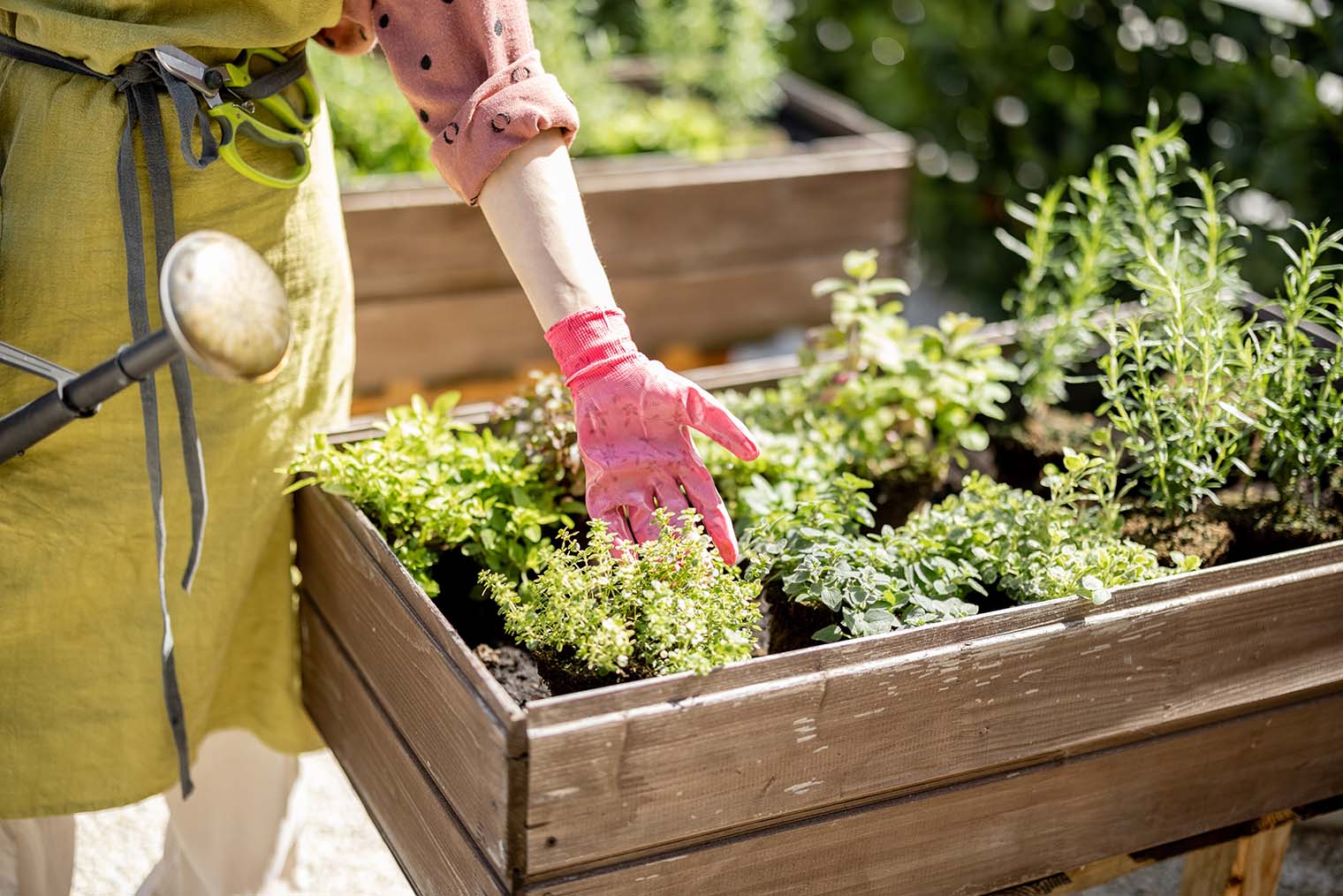
First, let’s look at the definition of a herb – or rather, definitions, since there is no one definition that is universally agreed upon. Herbs can be thought of as a widespread group of plants that are not classified as
vegetables, with savoury or aroma-tic qualities that are used for fragrances, for medicinal purposes, or for flavouring and garnishing food.
In the kitchen, herbs are distinguished from spices in that they are the leafy green or flowering parts of a plant, while spices are normally dried and come from other parts of the plant, such as the seeds.
In botany, “herb” refers to any “soft” plant that doesn’t produce a woody stem, while “herbaceous” refers to the green and soft parts of the plant. By this definition, rosemary, for instance, would not be considered a herb, since it has a woody stem. Another suggested definition of a herb is that it’s a plant that is useful to humans, although this definition is also not ideal, since it would include plenty of plants that aren’t generally thought of as herbs. One of the best definitions from a culinary perspective is that culinary herbs are leafy plants used in small amounts to provide flavour rather than sub-stance to food.
For the purposes of this guide, we will be focusing on what most of us commonly think of as herbs and looking at two plant families – the mint (Lamiaceae) family and the carrot (Apiaceae) family.
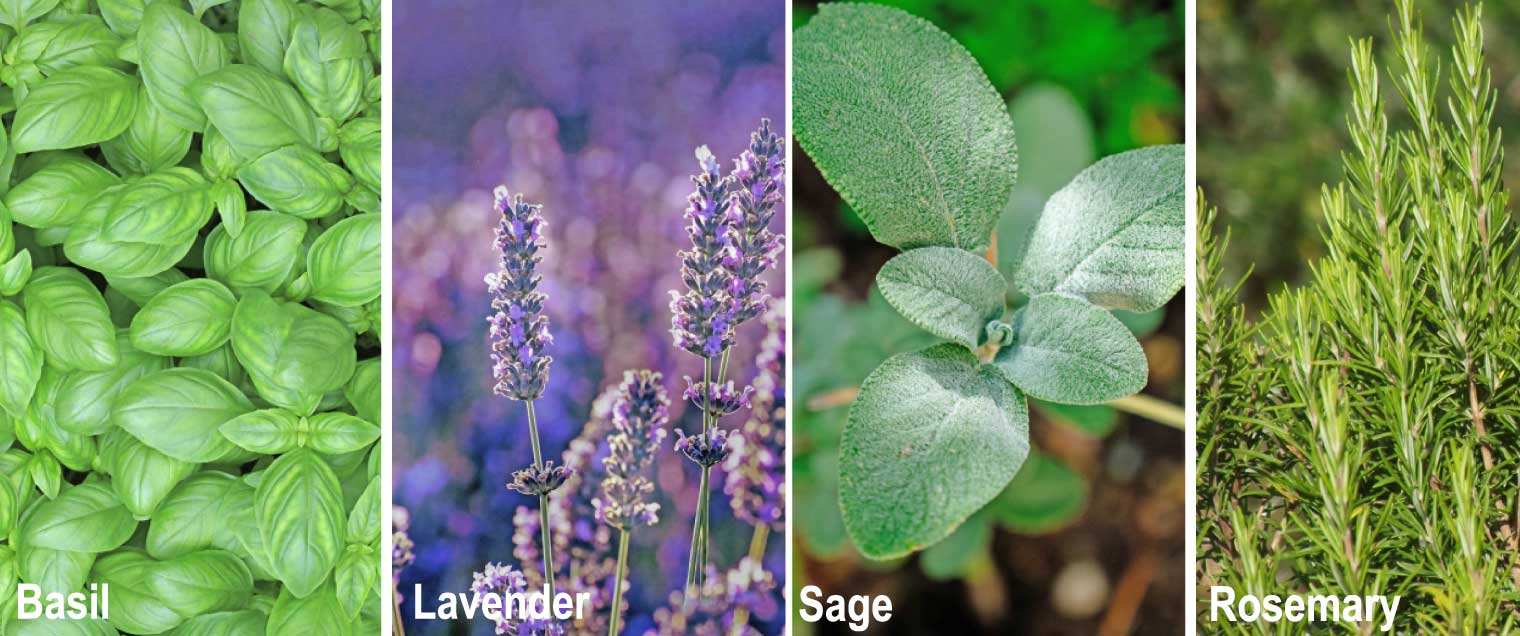
THE MINT PLANT FAMILY
The lamiaceae or mint family includes well-known favourites like basil, lavender, marjoram, oregano, rosemary, sage, thyme and of course, the different varieties of mint. Most of these are from Mediterranean-type climates and do well in our climate, especially in the Western Cape.
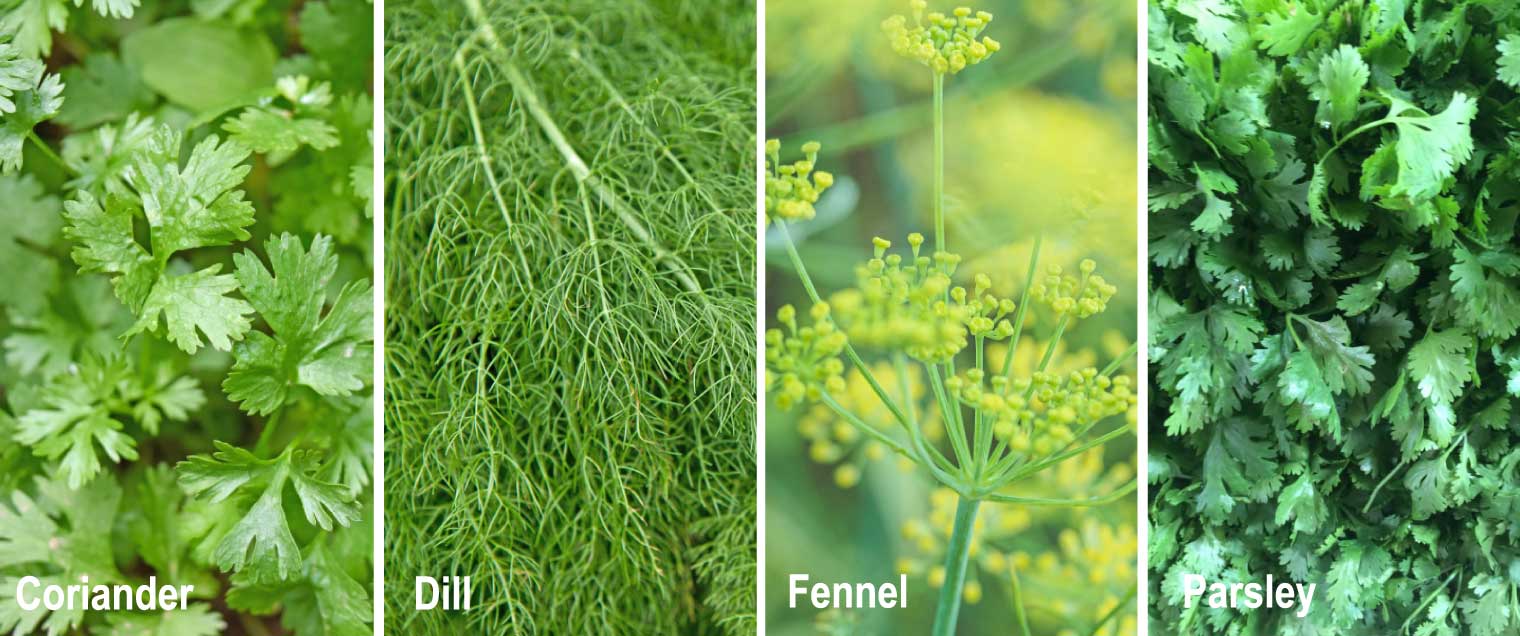
THE CARROT PLANT FAMILY
Herbs in the carrot (also known as the umbellifer or apiaceae) family have a sizable taproot and include coriander, dill, fennel and parsley. Compared to the mint family, these herbs prefer milder weather and more moisture in the soil. For this reason, it is a good idea to keep the two families separate and possibly even plant your apiaceae herbs in containers so that you have more control over the soil and moisture.
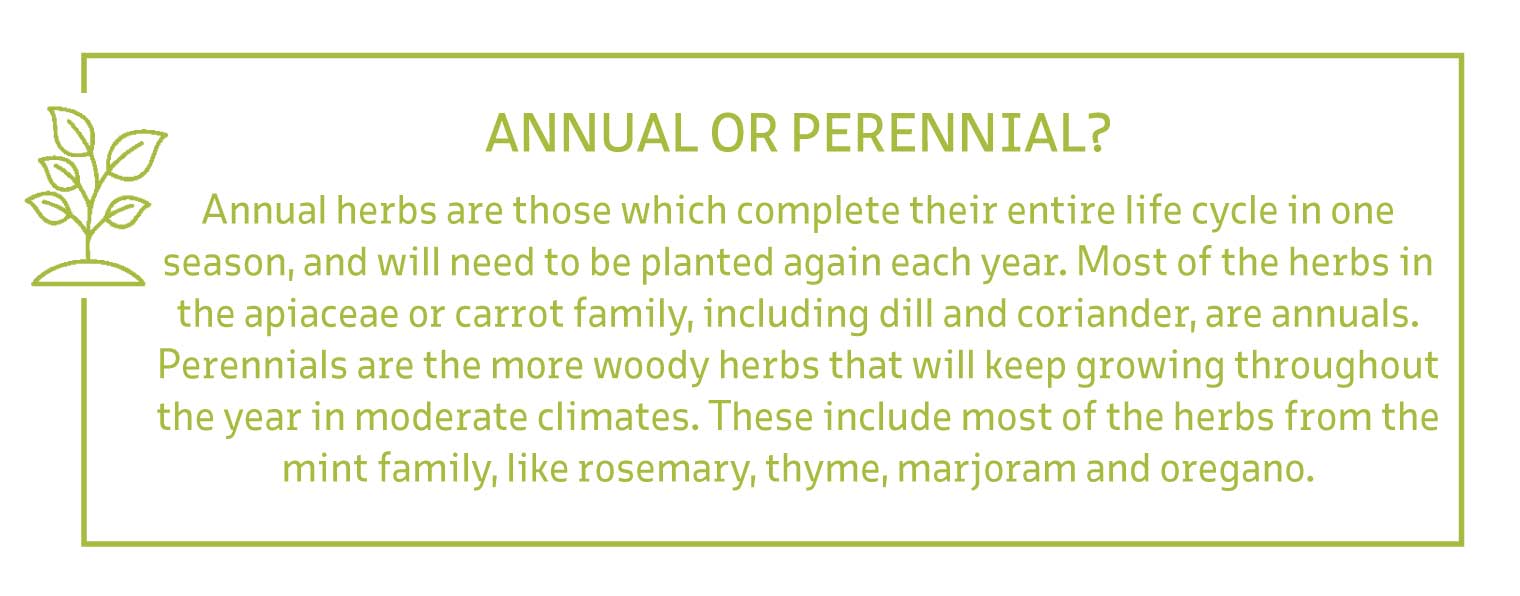
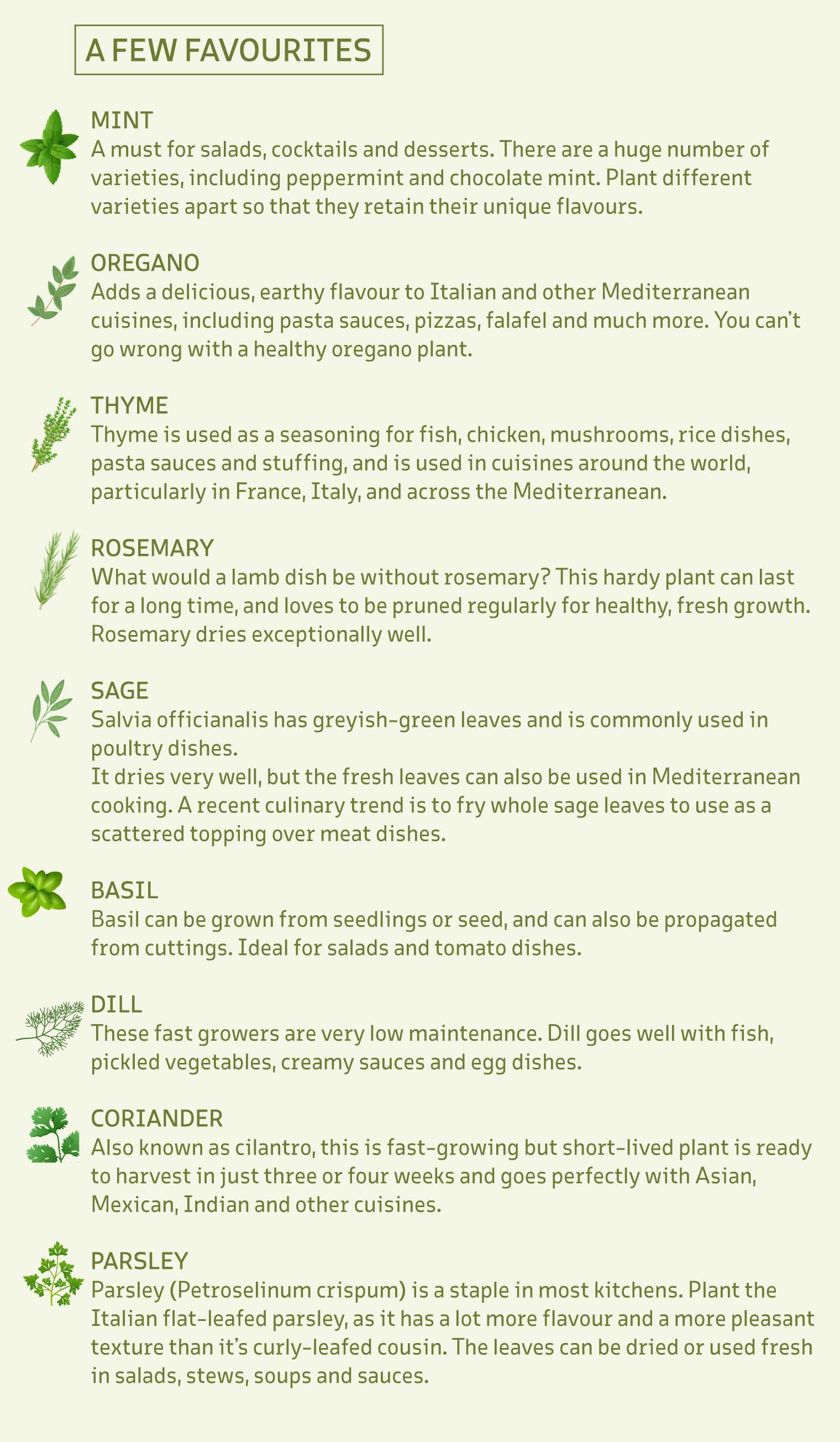
SETTING UP YOUR HERB GARDEN
First, decide where you’re going to make your garden. You could start off with pots on a sunny stoep, or find an area in the garden that you can turn into a herbaceous wonder-land. Your goal is to create the perfect environment so that your herbs will thrive. Give the mint family herbs like oregano, thyme, basil, mint and rosemary the highest and driest spot, if your chosen space is sloped, with the carrot family herbs like dill and coriander in the area that might get the most water. As a general rule though, herbs do not like sitting in water, so you may want to consider herb boxes or raised planters. There are a number of different types of planting boxes available to buy, and plenty of easy tutorials on the internet to make them or create raised gardens, using inexpensive and easy-to-find materials. A raised garden filled with well-drained soil will feel a lot more like home to your herbs than heavy clay soil.
Choose a spot with plenty of sunlight, as herbs like as much sunlight as they can get. Rosemary, oregano, and basil will need plenty of sunshine hours to thrive, while sage, thyme, dill, coriander and mint will grow in semi-shade.
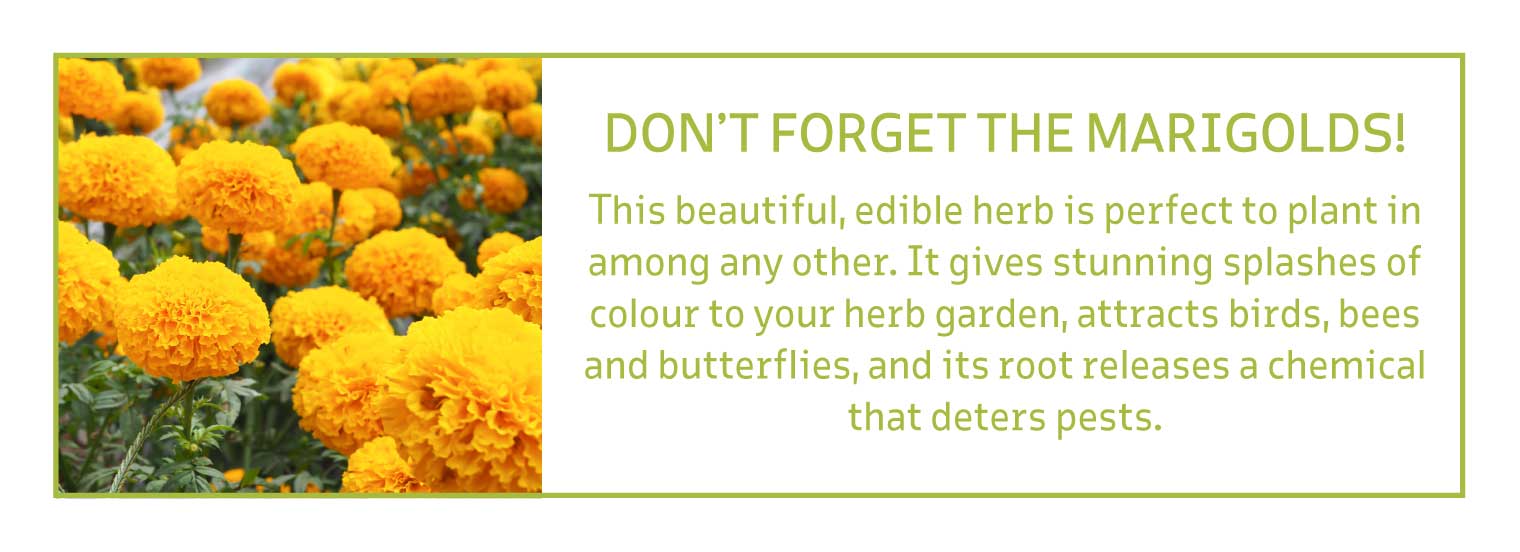
WHAT TO PLANT
Once you’ve established where your herbs will go, give some thought to what you’ll plant, choosing herbs that you’ll get the most use from. What are the dried herbs you often use from the pan-try? Which flavours do you love combining? Think of lamb and rosemary, garlic and parsley, tomato and basil, or a mint and rum cocktail. Which herbs do you often buy in punnets?
The answers to these questions should give you around 6 or 8 herbs to start with. It may seem like a lot, but once you get growing, you’ll soon want to plant more! A good place to start is parsley, thyme, oregano, rosemary, basil, mint, dill and thyme. As you experiment with your herb cooking and get the hang of growing herbs, you might want to add things like sage, French tarragon, coriander, Thai basil and lemon verbena.

GROWING IN CONTAINERS
Most herbs grow better in a larger container, so rather plant a few types of herbs together in a big box, than planting individually in small pots – these will require more care as they can dry out quickly. Ideally, the box should be around 20 – 30cm deep, especially for herbs from the apiaceae family, like parsley, with its long taproot.
If your container doesn’t have drainage holes in the bottom, use a drill to make a few good holes so that the water can drain out. As most of the herbs are Mediterranean, they really love a sandy soil, so fill your herb container with well-draining soil - a good mixture of topsoil, rich organic compost and coarse sand will be ideal. You want a light soil that drains easily, but still provides structure for the roots.
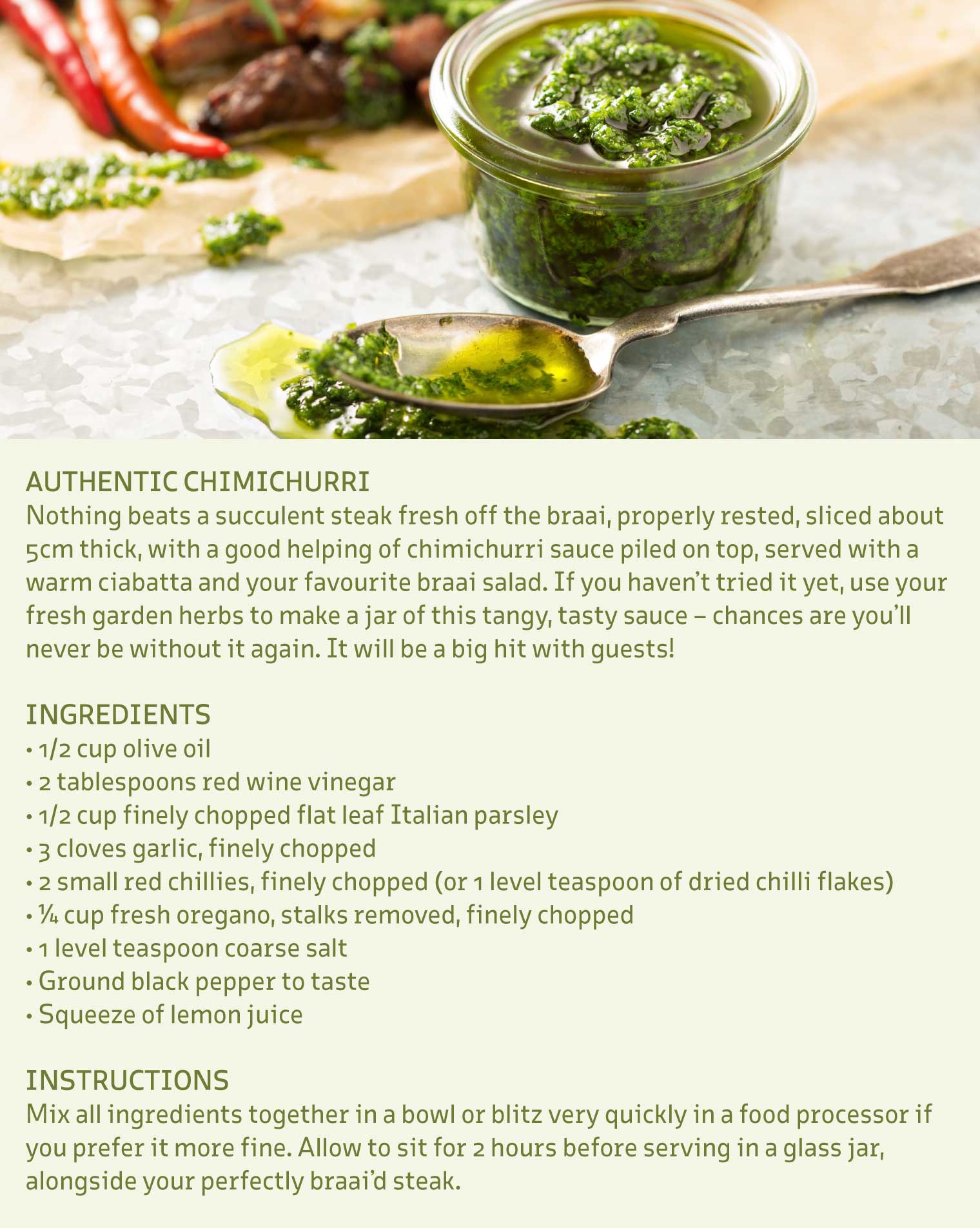
PLANTING YOUR HERBS
When it comes to what to plant where, as already mentioned, the mint family can be planted together and herbs from the carrot family can be planted together, as they have different water needs. If you decide to plant from different families in one pot, it’s not a problem, but plant the mint family herbs on the outer edges, where the soil is likely to dry out quicker.
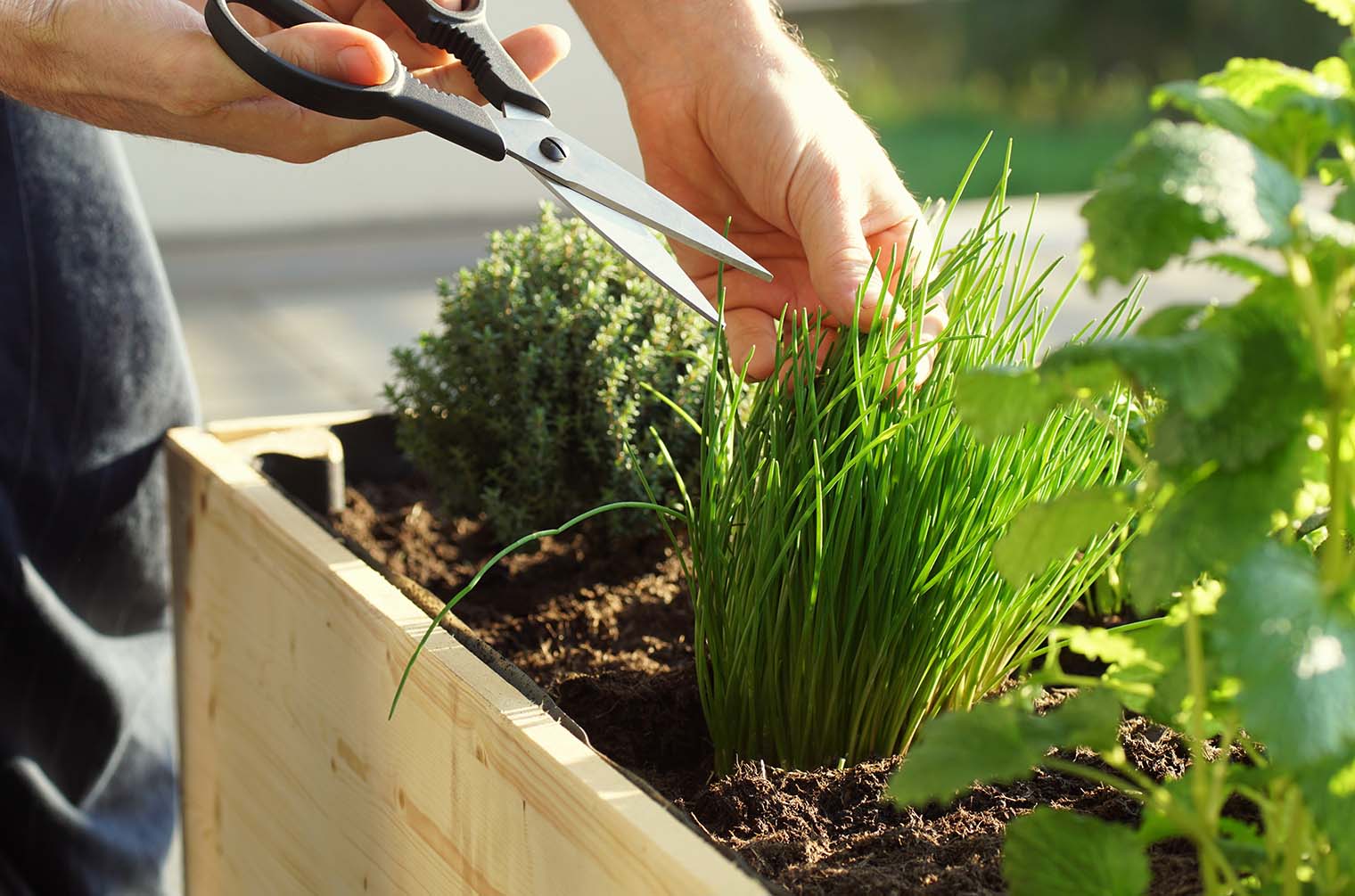
WATERING YOUR HERBS
Herbs in the mint family hate to be overwatered, so do water your herb garden consistently but let the soil dry out a bit between watering. To test, stick your finger into the soil before watering and check the soil an inch or two below the surface. If it’s still wet, it’s not quite time to water.

HARVESTING YOUR HERBS
For maximum flavour, harvest your herbs just before use. Most herbs enjoy being picked frequently - simply pinch out the growing tips to encourage bushier, compact growth and to delay annual herbs going to seed. Harvesting often also helps prevent pests and disease. Always start by cutting from the outermost branches and then work your way in. One of the many re-wards of growing your own herbs is that you can save and store enough to last you through the winter months. There are plenty of resources to learn techniques for drying, freezing, and prolonging the fresh-ness of your favourite herbs.
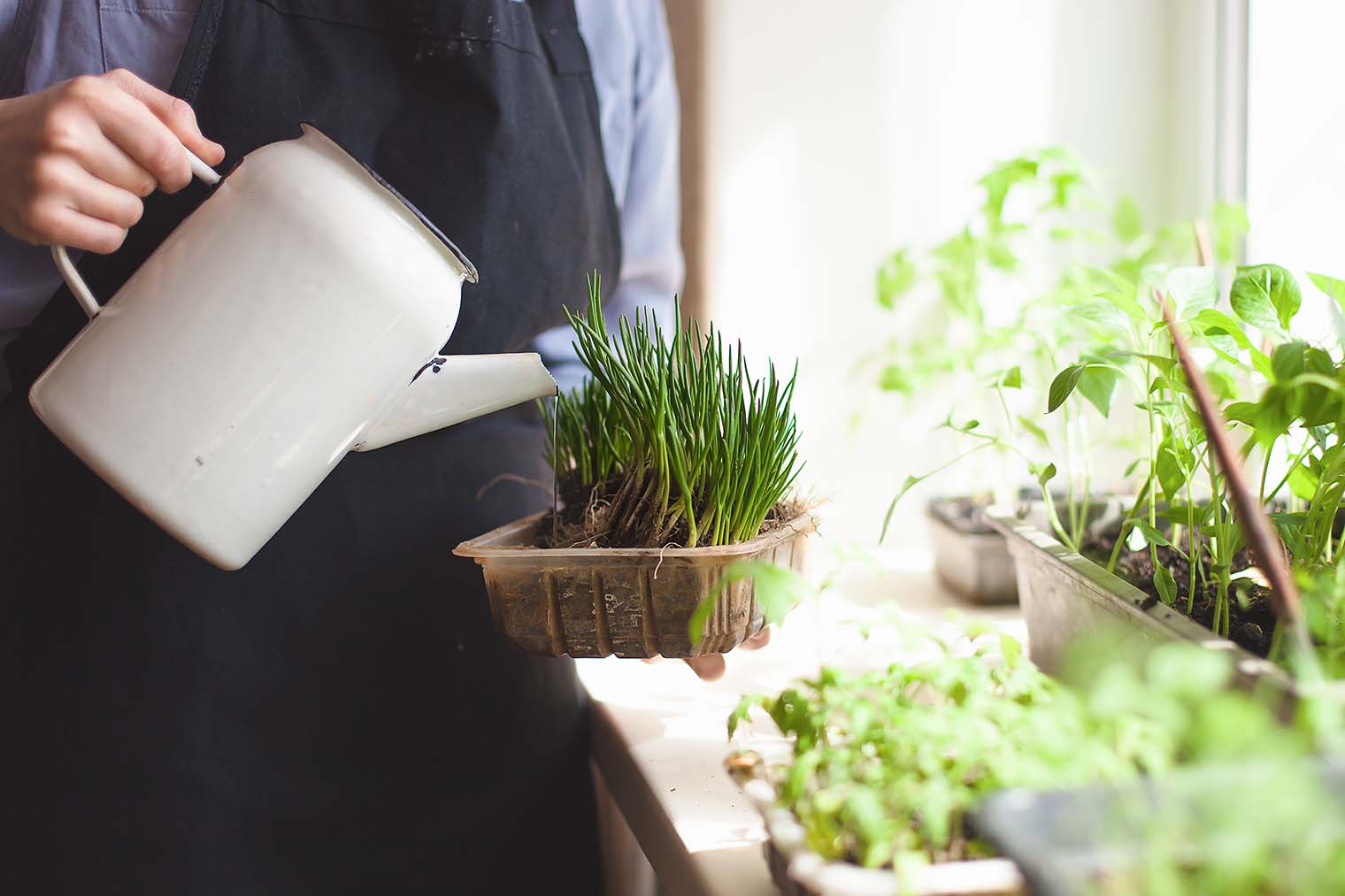
Overall, herbs are incredibly easy to grow compared to some other plants. If you dream of one day eating straight from your garden, the best place to start is with herbs. Once you’ve mastered the herb garden, you can move on to salad greens, and then more high maintenance plants like tomatoes, beans or artichokes. Enjoy!



